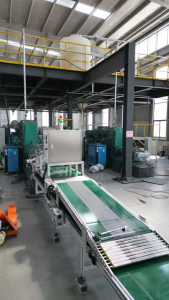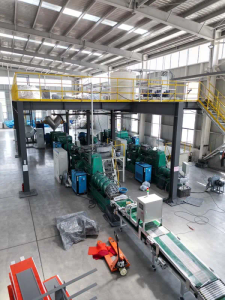Future computers run on human brain cells? Organoid intelligence, cutting-edge biological computing is coming to us
A magnified image of a lab-grown brain organoid with fluorescent labels for different cell types. (pink—neurons; red—oligodendrocytes; green—astrocytes; blue—all nuclei).
Despite the impressive record set by artificial intelligence (AI), its ability to learn still pales in comparison to that of the human brain. Now, scientists have revealed a revolutionary path: organoid intelligence, using lab-grown brain organoids as biological hardware.
AI has long been inspired by the human brain, an approach that has proven to be highly successful, allowing AI to do everything from medical diagnosis to poetry. But there is no doubt that the original model-the human brain is still superior to the machine in many aspects, so what if instead of trying to make AI more like the brain, start directly from the source?
Scientists in multiple fields are working to create a new generation of biological computers using three-dimensional cultures of brain cells (brain organoids) as biological hardware, and describe a roadmap to realize this vision in the journal Frontiers in Science.
Professor Thomas Hartung of Johns Hopkins University in the United States said: “We call this new interdisciplinary field ‘organoid intelligence’ (OI). A group of leading scientists is coming together to develop this technology, which will open A new era of fast, powerful and efficient biological computing.”
Why brain organoids are better computers
Brain organoids are cell cultures born in the lab. It’s not a “mini brain,” but it “shares” key aspects of brain function and structure, such as neurons and other brain cells. Also, while most cell cultures are flat, the organoids have a three-dimensional structure, which doubles the cell density of the culture and means neurons can form more connections.
But people still ask: Aren’t current computers smarter and faster than brains?
Hartung explained that while silicon-based computers are certainly better at numbers, brains are better at learning and more energy-efficient. For example, it took more energy to train the famous AI “AlphaGo” than it takes to maintain an active adult for 10 years.
“The brain also has an amazing ability to store information,” added Hartung. “We’re reaching the physical limits of silicon computers because humans can’t pack more transistors into a tiny chip. But the brain is completely connected. Instead, it has about 10 billion neurons connected by over a thousand points. That’s a huge difference in power compared to current technology.”
What is the OI biocomputer?
According to Hartung, current brain organoids need to be scaled up. “They are so small that each contains about 50,000 cells. For OI, we need to increase this number to 100,000.”
Meanwhile, the researchers are also developing techniques to communicate with the organoids. That is, send them a message and read what they are “thinking”. This will require the use of bioengineering and machine learning, as well as the design of new stimulation and recording devices.
Hartung’s team has also developed a brain-computer interface device, in a paper published last August, a flexible shell densely covered with tiny electrodes that both receive signals from the organoid and send signals to the brain. It transmits signals.
Ultimately, the scientists envision, OI will integrate a wide range of stimulation and recording tools. They connect, activate, and coordinate organoid networks to enable more complex computations.
OI can help prevent and treat neurological diseases
OI will also go beyond computing and into medicine. Brain organoids can be generated from adult tissue thanks to a breakthrough technique developed by Nobel Laureates John Gordon and Shinya Yamanaka. This means that scientists could develop personalized brain organoids from skin samples of patients with neurological diseases such as Alzheimer’s disease. Using this, several tests are performed to investigate how genetic factors, drugs, and toxins affect these conditions.
As an example, Hartung said scientists could then compare memory formation in organoids from healthy people and Alzheimer’s patients, and try to fix the flaws.
Building an “Embedded Ethics” Approach
The creation of human brain organoids capable of learning, remembering and interacting with the environment entails complex ethical issues. Can they develop consciousness? Do they experience pain? What rights does the scientific community have over brain organoids made from cells?
https://oaicon.com/index.php/2023/03/10/future-computers-run-on-human-brain-cells-organoid-intelligence-cutting-edge-biological-computing-is-coming-to-us/
Researchers are acutely aware of these problems. Hartung said OI needed to be developed in an ethical and socially responsible way, and for this reason, from the beginning they worked with ethicists to establish an “embedded ethics” approach. As research develops, all ethical issues are continually assessed by teams of scientists, ethicists, and the public.
How far is it from the first OI?
Although OI is still in its infancy, a recently published study by scientists has provided a proof of concept. Normal, flattened cultures of brain cells can learn to play the game of electronic pong, research shows.
Hartung concluded that the research team has been testing with brain organoids, and replicating this experiment with organoids has met the basic definition of OI. From now on, humanity can realize the full potential of OI simply by building the community, tools, and technology.







